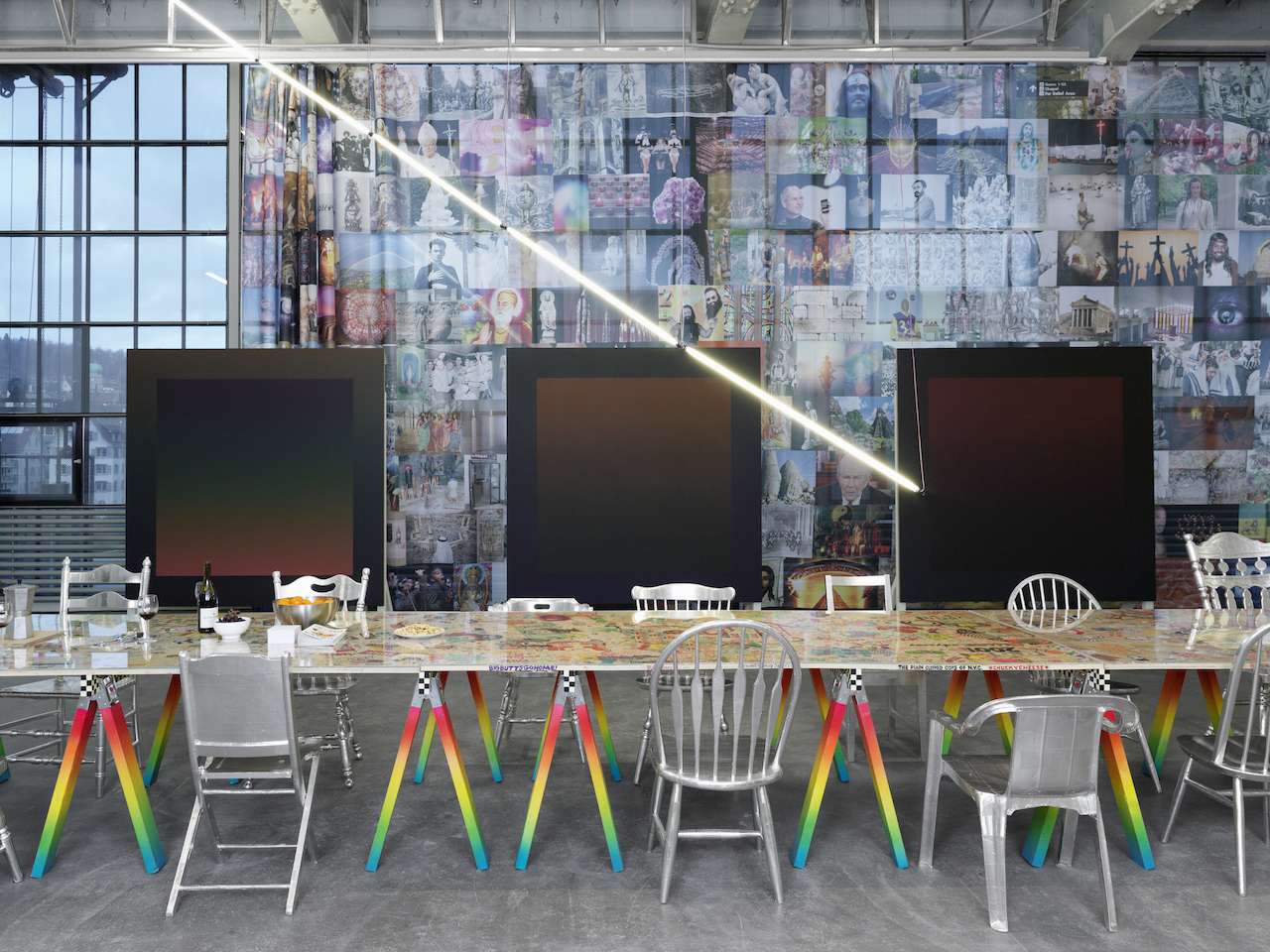
Rob Pruitt, The Church, Kunsthalle Zürich. Photo credit: Annik Wetter / Kunsthalle Zürich
The Church is not only Rob Pruitt’s current solo exhibition but also an interactive community space—Kunsthalle Zürich has morphed from a gallery to an educational and spiritual venue. The show combines Pruitt’s work from 1999 to 2017 with educational resources and community events, such as Sunday services organized by the Theological Seminary of University Zürich and theoretical discussions on Theory Tuesdays led by Zurich-based artist Philip Matesic. Yesterday, the museum hosted an Easter egg event, in which the artist dyed and designed Easter eggs alongside local families and community members. “People painted eggs inspired by previous painting projects of mine, but the results were so vast and surprising that I in turn was inspired by their creations,” Pruitt told Art21 Magazine. “I’m down for any celebration of the coming of spring, and I think Easter is all about that.”
Pruitt’s exhibition commemorates the 500th anniversary of the Reformation in Zürich, with an emphasis on the intersection of religion and public spaces. A prayer book at the entrance of the space, Use A Museum As A Church Or A Church as A Museum (2017), immediately solicits visitor participation. The Church draws parallels between places of devotion and places for viewing contemporary art, challenging the conventions of each context with equal measure, forging an irreverent platform for community inquisition and engagement. Rob Pruitt: The Church will be on view at Kunsthalle Zürich through May 13.
News of the Week
- Trevor Paglen’s flag Weeping Angel has been raised at the Creative Time Headquarters in New York City as well as numerous other locations across the country. The title of the work refers to a tool used by the CIA to spy on citizens and Paglen’s flags criticizing such unlawful surveillance tactics will be displayed through April 4.
- London’s Tate Modern has mounted the largest solo show of works by Joan Jonas, on view through August 5. The show features film, live performance, installations, and documentation or ephemera from prior performances. Reflecting on her early performances in a New York Times feature, Jonas explained the works arose from “a pent-up anger which gave energy to women to speak out,” and she believes the #MeToo movement continues this cause.
- Like Life: Sculpture, Color, and the Body (1300–Now) has opened at the Met Breuer, featuring works by Janine Antoni, Oliver Herring, Louise Bourgeois, Fred Wilson, and Yinka Shonibare MBE (RA). The show explores over seven hundreds years of sculptural responses to the human form combining well-known masterpieces with more contemporary takes on the figure. Accompanied by a catalog, Like Life continues through July 22.
- A new video featuring abstract painter Jack Whitten, who died at age 78 in January, was released this week as part of the Art21 digital series Extended Play. The artist’s final on-screen interview, the video also reveals the artist’s final work filmed in progress: Quantum Wall, VIII (For Arshile Gorky, My First Love In Painting). This work can be seen in a commemorative presentation through this Saturday at Hauser & Wirth Gallery, New York.
Looking Back
In an interview for the “Place Part II” issue of the Art21 Magazine, writer Caroline Picard interviewed curator Allison Glenn to discuss In the beginning, sometimes I left messages in the street, a public exhibition with eleven artists and artist collectives installed at ten different Chicago locations. From Woodlawn to Wicker Park, billboards, performances, and installations displaced contemporary art in public spaces while commenting on the structures of power. The title was inspired by the first sentence in David Markson’s novel, Wittgenstein’s Mistress. The protagonist, Kate, left messages in the street in an effort to reach a different audience, a metaphor for Glenn’s public art project.



